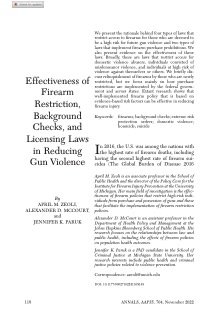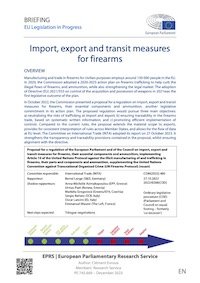By United Nations Office on Drugs and Crime (UNODC)
Crimes that affect the environment cover a broad range of illegal activities that cause harm to the natural world, as a whole or in a particular geographical area.1 They include wildlife crime, illicit trafficking in timber and timber products, crimes in the fisheries sector, trafficking in waste, including hazardous substances, and the subject of the present guide: illegal mining and trafficking in metals and minerals. Some ramifications of these crimes are irreversible and can be severe enough to destroy entire ecosystems and communities, undercutting legal and ecologically viable operations and diminishing future resource alternatives. They can also deprive local communities of vital resources and limit their access to legitimate income through traditional production activity, thus perpetuating impoverishment and armed violence.2 The various negative consequences of crimes that affect the environment hinder the achievement of the Sustainable Development Goals, including Goal 3 (healthy lives and well-being for all at all ages), Goal 6 (availability and sustainable management of water and sanitation for all), Goal 12 (sustainable consumption and production patterns), Goal 15 (sustainable use of terrestrial ecosystems, sustainable management of forests and combating of desertification, land degradation and biodiversity loss) and Goal 16 (peaceful and inclusive societies for sustainable development, access to justice for all and effective, accountable and inclusive institutions at all levels).3 There are many drivers of crimes that affect the environment. Among the most notable are attractive financial revenues and high demand for the goods and services generated through those crimes. Poverty situations are also regarded as a prominent enabler of crimes that affect the environment because economic hardship facilitates the recruitment of low-level offenders into organized criminal groups.4 People may be pushed into crimes that affect the environment by their income needs, especially in places where employment alternatives are not available. In its resolution 10/6, entitled “Preventing and combating crimes that affect the environment falling within the scope of the United Nations Convention against Transnational Organized Crime”, adopted in 2020, the Conference of the Parties to the United Nations Convention against Transnational Organized Crime noted with concern that crimes that affect the environment had become some of the most lucrative transnational criminal activities and were closely interlinked with different forms of crime and corruption. Against that background, the Conference of the Parties reaffirmed that the Organized Crime Convention constitutes an effective tool and an essential part of the legal framework for preventing and combating transnational organized crimes that affect the environment and for strengthening international cooperation in this regard5 and asserted its resolve to protect the victims, expressing its deep concern about all those killed, injured, threatened or exploited by organized criminal groups involved in or benefiting from crimes that affect the environment and about those whose living environment, safety, health or livelihoods are endangered or put at risk by those crimes.6 The Conference of the Parties called upon States parties to the Organized Crime Convention to make crimes that affect the environment, in appropriate cases, serious crimes … as defined in article 2, paragraph (b), of the Convention, to ensure that, where the offense is transnational and involves an organized criminal group, effective international cooperation can be afforded under the Convention.7 and requested the United Nations Office on Drugs and Crime, subject to the availability of extrabudgetary resources, and within its mandate, to provide technical assistance and capacity-building to States parties, upon request, to support their efforts to effectively implement the Convention in preventing and combating transnational organized crimes that affect the environment.8 Those recommendations of the Conference of the Parties to the Organized Crime Convention are aligned with resolution 8/12 of the Conference of the States Parties to the United Nations Convention against Corruption, entitled “Preventing and combating corruption as it relates to crimes that have an impact on the environment”, in which the Conference of the States Parties noted with concern the role that corruption can play in crimes that have an impact on the environment and that money-laundering may be used to disguise and/or conceal the sources of illegally generated proceeds, as well as to facilitate crimes that have an impact on the environment. The Conference urged States parties to the Convention against Corruption to implement the Convention by their domestic legislation and to ensure respect for its provisions, to make best use of the Convention to prevent and combat corruption as it relates to crimes that have an impact on the environment and the recovery and return of proceeds of crimes that have an impact on the environment, by the Convention.9 In 2021, the Fourteenth United Nations Congress on Crime Prevention and Criminal Justice adopted the Kyoto Declaration on Advancing Crime Prevention, Criminal Justice and the Rule of Law: Towards the Achievement of the 2030 Agenda for Sustainable Development.10 It underscores the commitment of Member States to the adoption of effective measures to prevent and combat crimes that affect the environment, such as illicit trafficking in wildlife, including, inter alia, flora, and fauna as protected by the Convention on International Trade in Endangered Species of Wild Fauna and Flora, in timber and timber products, in hazardous wastes and other wastes and precious metals, stones and other minerals, as well as, inter alia, poaching, by making the best possible use of relevant international instruments and by strengthening legislation, international cooperation, capacity-building, criminal justice responses and law enforcement efforts aimed at, inter alia, dealing with transnational organized crime, corruption and money-laundering linked to such crimes, and illicit financial flows derived from such crimes, while acknowledging the need to deprive criminals of proceeds of crime.11 Most recently, in its resolution 76/185, adopted on 16 December 2021, the General Assembly called for a “balanced, integrated, comprehensive and multidisciplinary approach and response to address the complex and multifaceted challenges related to crimes that affect the environment”, acknowledging a need for long-term, comprehensive and sustainable development-oriented measures
Vienna: UNODC, 2023. 135p.





















